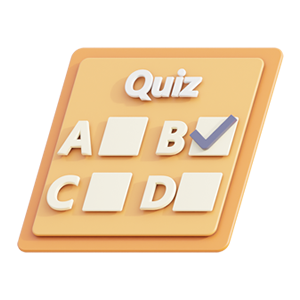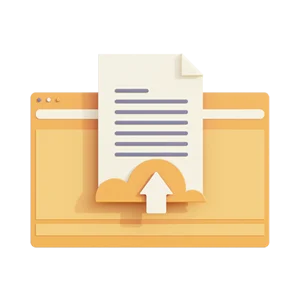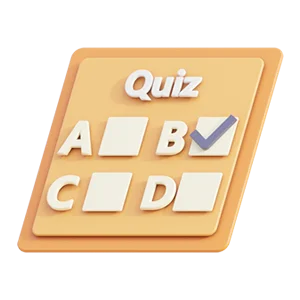Sell your lecture notes and other study documents.
Create your own quizzes. Then sell them to others.
Package documents and quizzes together to earn more cash.
Work as a tutor and provide personalized learning in your area of expertise.
View students’ requests and send a proposal of your relevant services.
- Study Documents
Categories
Choose a country
Textbooks
- Study Services
What do you need help with?
Choose a country
Requests
- Quizzes
Educations
Choose a country
Create quiz
- Studybot New
How can Studybot help?
How to reference using APA style
This study guide intends to teach students on how to reference in APA style format. It covers all areas of citation including history, date, name and many more
Preview document (3 of 16 pages)
Knoowy benefits
$ 4,26
Add document to cart Money back guarantee
Money back guarantee
 Documents can be downloaded immediately
Documents can be downloaded immediately
 $0.50 discount when paying with balance
$0.50 discount when paying with balance
-
 Receive free quiz questions with document
Receive free quiz questions with document

Specifications
- Subject: Research
- All documents for this course ›
Document
- Section: Other documents
- Made on: 06-10-2020
- Type: .pdf
- Pages: 16
- Language: English
Tags
- American Psychological Association
Seller
Earn from your summaries?

Do you make summaries or do you have any completed assignments? Upload your documents to Knoowy and earn money.
Upload documentYou may also find these Other documents helpful
View all recommended documents »-
Introduction to research
By Nati2528 on 12-03-2023$ 6,89 24 pages
24 pages
A brief introduction to research especially for project management students. By reading this document you will have detailed insight into how to do research works for work or school
 Cambridge University
/
Business Administration
/
Research
Cambridge University
/
Business Administration
/
Research
A brief introduction to research especially for project management students. By reading this document you will have detailed insight into how to do research works for work or school
 Cambridge University
/
Business Administration
/
Research
$ 6,89
Cambridge University
/
Business Administration
/
Research
$ 6,89 24 pages
24 pages
-
Principles and practice of management
By ukachiwizdom on 06-10-2020$ 7,46 66 pages
66 pages
This study notes gives students an in-depth knowledge of business management. This study notes covers the introductory aspect of management, including history, skills of a manager, roles of the manager, managing the global diversity, managing the workplace...
Business managementThis study notes gives students an in-depth knowledge of business management. This study notes covers the introductory aspect of management, including history, skills of a manager, roles of the manager, managing the global diversity, managing the workplace...
Business management$ 7,46 66 pages
66 pages
-
Communication in the work place
By ukachiwizdom on 06-10-2020$ 4,26 16 pages
16 pages
This was an assignment carried out by a group of students at the University of Lagos, Nigeria. The assignment talks about the various communication that exist between employees and employers and the levels of communication within the organisation.
Business communicationThis was an assignment carried out by a group of students at the University of Lagos, Nigeria. The assignment talks about the various communication that exist between employees and employers and the levels of communication within the organisation.
Business communication$ 4,26 16 pages
16 pages
-
Research 1 - erasmusmushogeschool Brussel
By ShirleyDeBuyst on 11-17-2022$ 8,53 11 pages
11 pages
Deze samenvatting omvat alle informatie die je moet kennen voor het examen Research. Pak zeker het boek 'Dit is onderzoek!' erbij en je eigen samenvatting. Dit is maar een samenvatting, nog lang niet alle informatie staat erin maar wel de belangrijke!
 Erasmushogeschool Brussel
/
Office Management
/
Research
Erasmushogeschool Brussel
/
Office Management
/
Research
Deze samenvatting omvat alle informatie die je moet kennen voor het examen Research. Pak zeker het boek 'Dit is onderzoek!' erbij en je eigen samenvatting. Dit is maar een samenvatting, nog lang niet alle informatie staat erin maar wel de belangrijke!
 Erasmushogeschool Brussel
/
Office Management
/
Research
$ 8,53
Erasmushogeschool Brussel
/
Office Management
/
Research
$ 8,53 11 pages
11 pages
Sell summaries and other study documents
Upload document
Earn money and help students with your study services
Offer study services
Test yourself and earn money with selfmade quizzes
Create quiz
How it works
Knoowy
Buy and sell summaries and other study documents for: University - Secondary Education - All study documents
Get the help of tutors: Tutoring - Proofreading & editing - Research - Assignments & homework - Translation - Other study problems
Learning support: Learning quiz questions - Create quiz questions - Ask a studybot question - Studybot answers
 Deal: get 10% off when you purchase 3 or more items!
Deal: get 10% off when you purchase 3 or more items!
Deal: get 10% off when you purchase 3 or more items!

Knoowy uses both functional and analytical cookies 🍪. See our privacy policy for more details.
Accept


